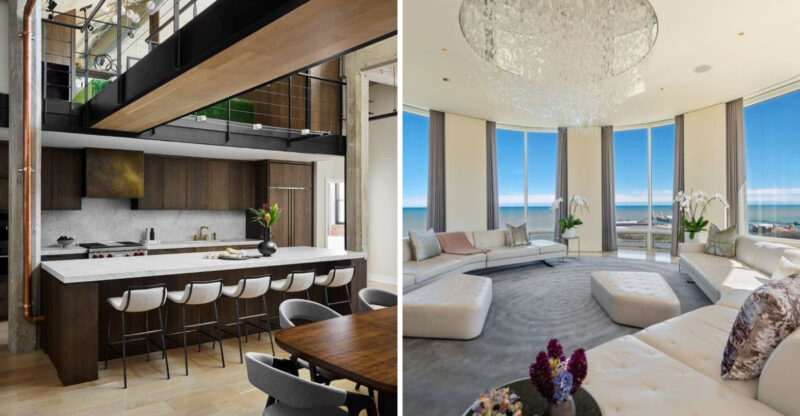16 Iconic Home Items That Are Older Than You Think
That vintage clawfoot tub in your neighbor’s remodel? It might be older than your grandparents. Many of the “classic” items we see in stylish homes today actually have surprisingly deep roots, some dating back centuries.
From kitchen staples to iconic furniture pieces, these designs have stood the test of time, often evolving but rarely going out of style.
I’ll highlight some iconic home items that are much older than they look, and why they’re still around. The historical references are based on widely accepted design timelines and may vary by region or origin.
1. Mason Jars
Did you know these handy glass containers date back to 1858? John Landis Mason patented them as a revolutionary way to preserve food at home. Mason jars survived generations because they simply work.
The threaded neck design was groundbreaking, allowing for an airtight seal that kept food fresh before refrigeration existed. Today, these versatile vessels have transcended their original purpose, becoming wedding decorations, drinking glasses, and craft projects.
2. Cast Iron Skillets
Those heavy pans in your kitchen cabinets have ancient origins! People were cooking with cast-iron vessels in China around 500 BCE.
Cast iron skillets became American kitchen staples during the 18th and 19th centuries. When properly seasoned, these virtually indestructible pans develop a natural non-stick surface that improves with age.
Many families still cook with skillets passed down through multiple generations. Their incredible heat retention and durability explain why cast iron has never gone out of style.
3. Wingback Chairs
Though they look perfectly at home in modern living rooms, wingback chairs first appeared in 1600s England. The distinctive “wings” weren’t just stylish, they served a practical purpose by blocking drafts and trapping heat from fireplaces.
English craftsmen designed these chairs to shield sitters from cold winter air in poorly insulated homes. Wingbacks evolved from simple wooden seats to plush, upholstered status symbols. Next time you curl up in one, remember you’re enjoying the same cozy comfort that people sought four centuries ago!
4. Lava Lamps
While they scream 1970s psychedelic vibes, lava lamps were actually invented in 1963 by British accountant Edward Craven Walker. He named his creation the “Astro Lamp” after being inspired by an egg timer design at a pub.
The hypnotic motion comes from wax heated by a light bulb, creating those iconic blobs that float and merge. Walker’s company, Mathmos, still produces these groovy lights today.
Despite their retro reputation, lava lamps have maintained steady popularity for nearly 60 years, proving good design never truly goes out of style.
5. Clawfoot Tubs
Long before modern bathrooms existed, clawfoot tubs were the height of bathing luxury. These elegant fixtures gained popularity in the late 1800s when indoor plumbing was becoming accessible to wealthy homeowners.
Made from cast iron coated with porcelain enamel, these tubs were status symbols in Victorian homes. The distinctive feet, often resembling eagle or lion claws, elevated the tub for easier cleaning underneath.
Despite countless bathroom trends coming and going, clawfoot tubs have maintained their appeal, commanding premium prices in antique markets and inspiring modern reproductions.
6. Tiffany Lamps
If you’ve admired these colorful stained glass beauties, you’re appreciating art from the 1890s! Louis Comfort Tiffany developed a unique copper foil technique that allowed for more intricate designs than traditional leaded glass.
Each authentic Tiffany lamp contains hundreds of hand-cut glass pieces arranged in nature-inspired patterns. The distinctive dragonfly, wisteria, and peacock designs became hallmarks of the Art Nouveau movement.
Though Tiffany Studios closed in 1932, their lamps remain highly coveted, with original pieces fetching hundreds of thousands at auction.
7. Mid-Century Modern Furniture
That sleek chair in your living room? Its design might be older than your parents! Mid-century modern furniture emerged between 1945-1975, championing clean lines, organic forms, and functionality.
Designers like Charles and Ray Eames, Eero Saarinen, and Herman Miller created pieces that feel remarkably current today. The style developed as a response to ornate pre-war furniture, embracing new materials like molded plywood and fiberglass.
Many iconic pieces from this era remain in production, with both vintage originals and licensed reproductions commanding premium prices.
8. Rotary Phones
Before smartphones, touch-tone buttons, or even push buttons, there were rotary dial telephones. The first successful rotary phone system was introduced in 1919, though earlier prototypes existed around 1900.
Using a rotary phone required physically turning the dial for each digit and waiting for it to return before dialing the next. The distinctive clicks and whirrs became the soundtrack of communication for generations.
Many people under 30 have never used one, yet these phones remained standard in American homes until the 1980s, surviving nearly a century before digital technology finally made them obsolete.
9. Windsor Chairs
Those spindle-backed wooden chairs in country kitchens everywhere have been around since the early 1700s! Windsor chairs originated in England near Windsor Castle (hence the name) but quickly became staples in colonial American homes.
Their distinctive construction features a solid wooden seat with legs and back spindles driven directly into it, no frame required. This ingenious design made Windsor chairs both lightweight and incredibly sturdy.
American furniture makers adapted the style with regional variations, creating a distinctly American interpretation that has remained popular for over 300 years.
10. Pyrex Dishes
Those colorful glass baking dishes in your kitchen cabinet first appeared in 1915! Corning Glass Works developed borosilicate glass that could withstand extreme temperature changes without breaking.
Originally clear, Pyrex introduced its iconic colored patterns in the 1940s and ’50s. These distinctive designs, like the famous “Butterprint” pattern with roosters and corn, have become highly collectible.
The original heat-resistant formula was so revolutionary that it was used in railroad lanterns, laboratory equipment, and even early telescope mirrors before becoming a household kitchen essential.
11. Rattan Furniture
Though it might seem like a recent tropical trend, humans have been weaving rattan into furniture for thousands of years! Ancient Egyptian tombs contained rattan chairs dating back to 3000 BCE.
Rattan is actually a climbing palm vine native to tropical regions, particularly Southeast Asia. Its hollow core makes it lightweight yet incredibly strong and flexible.
Victorian-era Europeans embraced rattan during colonial expansion, while Americans fell in love with it during the 1960s and ’70s tiki craze. This sustainable material continues to cycle in and out of fashion, never truly disappearing.
12. Dutch Ovens
Before slow cookers and Instant Pots, there were Dutch ovens, and they’re way older than you might guess! These heavy cooking pots with tight-fitting lids date back to the early 1700s.
The English actually invented them, but named them “Dutch” because the Netherlands had superior metal casting techniques at the time. Early American settlers relied on these versatile vessels for everything from boiling water to baking bread.
The basic design has remained virtually unchanged for centuries, proving that sometimes the original version simply can’t be improved upon.
13. Glass Doorknobs
Those sparkling crystal-like doorknobs aren’t just pretty, they’re practical history! Glass doorknobs became widespread during World War I when metal was scarce and needed for the war effort.
Before this shortage, most doorknobs were made of brass, bronze, or iron. Manufacturers turned to glass as an elegant alternative that quickly became fashionable in its own right.
Many glass doorknobs from the 1920s and 30s featured intricate Art Deco patterns pressed into the glass. These beautiful functional pieces now fetch premium prices from restoration enthusiasts and collectors.
14. Roll-Top Desks
That classic desk with the curved wooden cover has been around since the 1700s! King Louis XV of France commissioned the first roll-top desk, then called a “bureau à cylindre,” around 1760.
The ingenious tambour design, wooden slats glued to canvas that roll along curved tracks, allows users to quickly secure paperwork without removing everything from the desktop. These desks reached peak popularity during the Victorian era as symbols of prosperity and organization.
Though digital devices have made paper storage less necessary, roll-top desks remain sought-after for their nostalgic appeal and clever engineering.
15. Patterned Linoleum Flooring
Those retro kitchen floors with geometric patterns aren’t a mid-century invention! Linoleum was actually patented in 1860 by Englishman Frederick Walton, who discovered the durable material by accident.
Made from linseed oil, pine resin, ground cork, and other natural materials on a burlap backing, linoleum was the first resilient flooring. Its water-resistance and comfort underfoot made it revolutionary for kitchens and bathrooms.
The colorful patterns we associate with 1950s homes were actually introduced decades earlier. Genuine linoleum remains in production today, experiencing renewed interest as an eco-friendly alternative to vinyl.
16. Oil Lamps
Before electricity transformed homes, oil lamps were cutting-edge technology! While simple oil lamps date back thousands of years, the modern glass chimney lamp was invented in 1780 by Swiss physicist Aimé Argand.
His revolutionary design produced light equivalent to 6-10 candles from a single flame. The familiar kerosene lamp with a glass chimney became standard in American homes during the 19th century.
Many rural homes relied on these lamps well into the 1940s before rural electrification reached them. Today, these lamps remain practical emergency lighting solutions while also serving as nostalgic decorative pieces.






